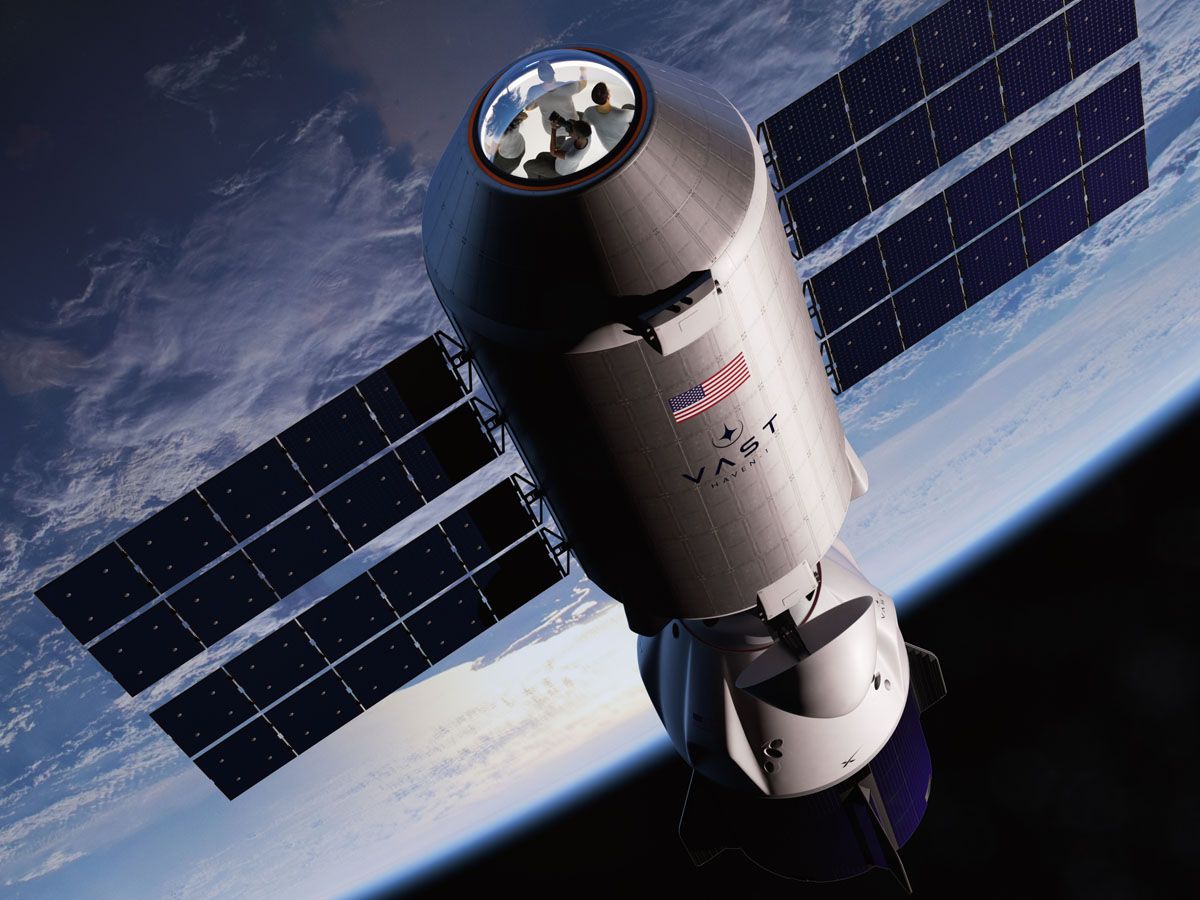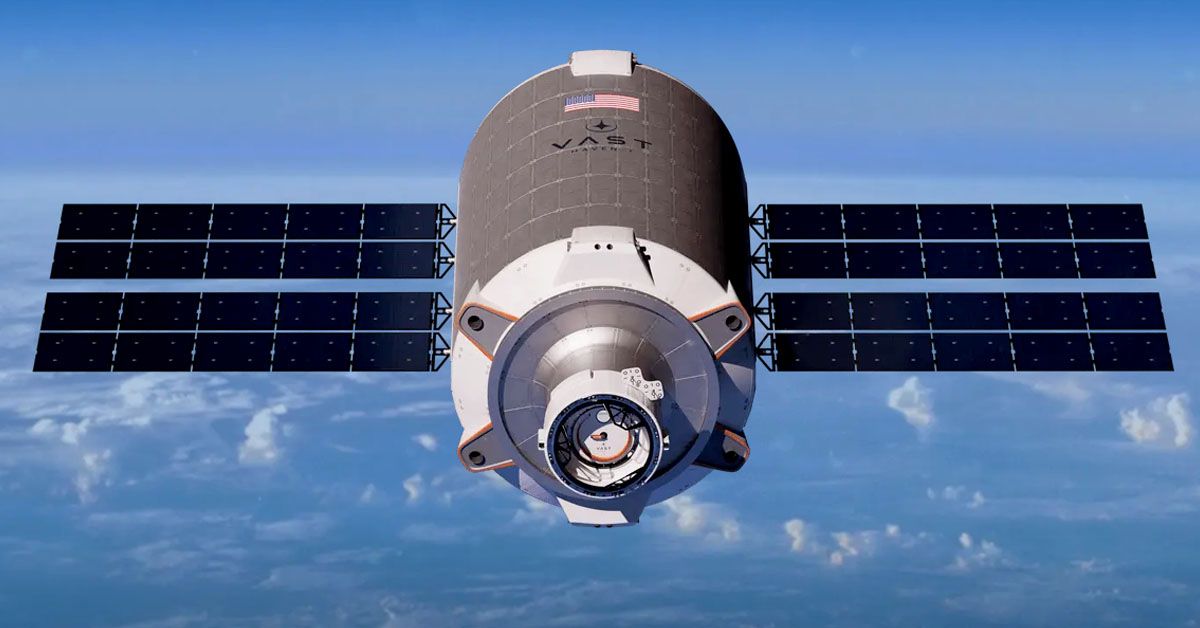In an epoch where the final frontier is no longer limited to governmental agencies, a new protagonist emerges. Introducing Vast Space, a California-based startup that's setting its sights not just on the stars, but on revolutionizing our relationship with outer space. This audacious venture aspires to accomplish what was once merely the stuff of science fiction: the launch of the first privately-operated space station.
In a groundbreaking partnership with SpaceX, Vast Space is gearing up to make history. Their ambitious agenda takes us to the not-so-distant future of 2025, when the company intends to catapult its maiden voyage, Haven-1, into the cosmos aboard a SpaceX Falcon 9 rocket. The emergence of this private space station marks a significant paradigm shift, paving the way for an entirely new era of space exploration and habitation.
The Vision of Vast Space
In a crowded field of space enthusiasts and entrepreneurs, Vast Space has set itself apart with a clear, focused vision. Merely two years old, the startup is the brainchild of a group of individuals committed to fundamentally altering our relationship with the cosmos. Their objective is audacious yet simple: to operate a 100-meter-long multi-module spinning artificial gravity space station. With a roadmap that propels them into uncharted territory, they're not just reaching for the stars, they're striving to create a sustainable, accessible, and practical presence within them.
Jed McCaleb, Vast Space's CEO, is at the helm of this bold venture. Armed with a personal fortune estimated to be $2.4 billion, McCaleb is investing not just his wealth but his faith into the project. The CEO has committed a staggering $300 million of his own fortune towards the realization of Haven-1, underscoring his belief in the transformative potential of this project. McCaleb's vision extends beyond Haven-1, as he looks forward to seeing larger artificial gravity space stations populating Earth's orbit and beyond. A future where space isn't a distant, untouchable void, but a tangible reality for humanity, lies at the heart of McCaleb's mission.
Vast's ambitions reach further than the first private space station. The company's long-term vision targets the development of an artificial gravity space station, an achievement that could revolutionize our understanding and experience of life in space. Vast plans to conduct the world's first spinning artificial gravity experiment on their commercial space station, Haven-1, a significant leap towards this goal. This could fundamentally alter our perception of space living, transforming it from a challenging, gravity-less environment to a more familiar, Earth-like setting. Ultimately, the goal is to employ SpaceX's Starship transportation system to deploy larger artificial gravity stations, firmly establishing humanity's footprint in the cosmos.
The Initial Missions: Haven-1 and Vast-1
An endeavor of this magnitude necessitates a robust partnership, and Vast Space has found a like-minded ally in SpaceX. The two companies have joined forces to launch the world's first private space station, Haven-1, into orbit. This historic event is slated for August 2025, with Haven-1 hitching a ride aboard SpaceX's workhorse Falcon 9 rocket. The subsequent mission, Vast-1, will ferry a four-person expedition using SpaceX's Dragon capsule, marking another milestone in the journey toward commercialized space travel.
For those intrigued by the prospect of becoming a space traveler, Vast Space is currently selling up to four seats on the Vast-1 mission. Yet, the opportunity isn't open to all. The company is specifically courting crew members with a passion for scientific or philanthropic work. Once chosen, these pioneers will undergo rigorous astronaut training, provided by SpaceX, which will cover everything from operating in zero-gravity environments to emergency preparedness.

The journey of Haven-1 doesn't end with its initial independent orbit around Earth. Vast's grand vision includes plans for Haven-1 to eventually become an integral module of a much larger space station. The integration will mark a significant step towards creating a more extensive, sustainable, and versatile outpost in the Earth's orbit, inching us closer to a future where space is more accessible and familiar.
The Financials and Logistics
Even though the daring collaboration between Vast Space and SpaceX has been unveiled to the public, certain elements of their joint venture are still concealed. The finer points of their financial arrangement, encompassing the expenses for the launch and transport services, have been withheld from public knowledge. This absence of clarity injects an air of fascination into the endeavor, leaving us eagerly awaiting more information as the project unfolds.
What we do know is that CEO Jed McCaleb has made a substantial personal investment towards Haven-1, putting forth $300 million of his own wealth. However, the distribution of this budget, especially in terms of the project's various financial obligations with SpaceX, remains undisclosed. As we venture deeper into the intricacies of private space travel, allocating this budget will be a critical aspect to watch.

The creation of a space station is no small task. It's a complex undertaking that necessitates extensive testing, meticulous planning, and the development of key technologies, such as life support systems. Fortunately, Vast can leverage the life support systems that SpaceX has already developed for its Dragon spacecraft, providing a strong foundation for the project. Still, as the countdown to the launch begins, the challenges and uncertainties of building an orbital habitat present a formidable hurdle that Vast and SpaceX must surmount together.
The Competitive Landscape
The race to establish a significant presence in low Earth orbit isn't confined to just Vast Space. Other private companies are also stepping up their efforts. Blue Origin, for instance, has proposed its Orbital Reef, while Sierra Space plans to launch the Dream Chaser spaceplane. Each competitor is presenting a unique vision for the future of space habitation, contributing to a dynamic and competitive landscape.
As Vast Space endeavors to make its mark, it faces stiff competition from Axiom Space. Axiom has its sights set on launching its first module to the International Space Station (ISS) by the close of 2024, potentially beating Vast Space to the punch. This race to launch first adds an additional layer of excitement and urgency to the development of private space stations.
In this new age of space exploration, NASA isn't merely a spectator. It's leveraging its expertise, resources, and influence to spur the growth of commercial space stations. The space agency has invested in multiple commercial outposts, including Axiom Space, and has expressed interest in more. NASA's strategy of fostering a commercial market in low Earth orbit is changing the dynamics of space exploration, offering new opportunities and challenges for companies like Vast Space.
Despite the competition, Vast Space holds a unique position as a new entrant in this space race. With its innovative ideas, deep pockets, and partnership with SpaceX, Vast Space has an opportunity to disrupt the status quo. The company's ambitious vision of creating artificial gravity space stations sets it apart from its competitors and could potentially redefine our understanding of life in space.
The Future of Vast Space
Looking ahead, Vast Space has more than just one mission on the horizon. The company is actively exploring the possibility of a second crewed SpaceX mission, signaling its commitment to regular human presence in space. While details remain under wraps, this planned mission further emphasizes Vast Space's long-term vision.
Haven-1 is just the beginning. Vast Space plans to expand this initial module into a larger, more complex space station. This expansion will offer increased habitable space, more research capabilities, and the potential to host a greater number of astronauts and space tourists. Haven-1 is more than a mission, it's the first step in a long journey to democratize space.
Beyond the expansion of Haven-1, Vast Space has its sights set on an even more ambitious goal: creating a larger station with artificial gravity. This step represents a quantum leap forward in space habitation. It would allow for extended stays in space with less physical strain on astronauts, opening the door to a wider range of activities and research possibilities.

The introduction of a space station equipped with artificial gravity could significantly revolutionize the landscape of scientific exploration. This environment would allow the execution of experiments that mimic terrestrial conditions more accurately, thus bolstering the credibility and practical relevance of the results obtained. This groundbreaking aspect could position Vast Space's outpost as a highly desirable destination for global scientific communities, paving the way for unprecedented opportunities in research conducted beyond our planet's atmosphere.
As we stand on the brink of a new era in space exploration, it's private companies like Vast Space, with their audacious plans and innovative ventures, leading the way. Navigating a complex landscape of financial, technical, and regulatory hurdles, Vast Space, under the guidance of CEO Jed McCaleb, is not just dreaming but actively constructing a future where space stations with artificial gravity are commonplace.
Their ambitious missions, starting with Haven-1, are paving the way for sustained human presence in space, opening up new frontiers for exploration and research. With their bold vision and relentless determination, Vast Space isn't just transforming our relationship with the cosmos, but also inspiring us all to dream bigger, reach further, and envisage a future where the stars are no longer beyond our grasp.
Sources: vastspace.com / space.com / cnn.com / engadget.com / aviationweek.com / washingtonpost.com












